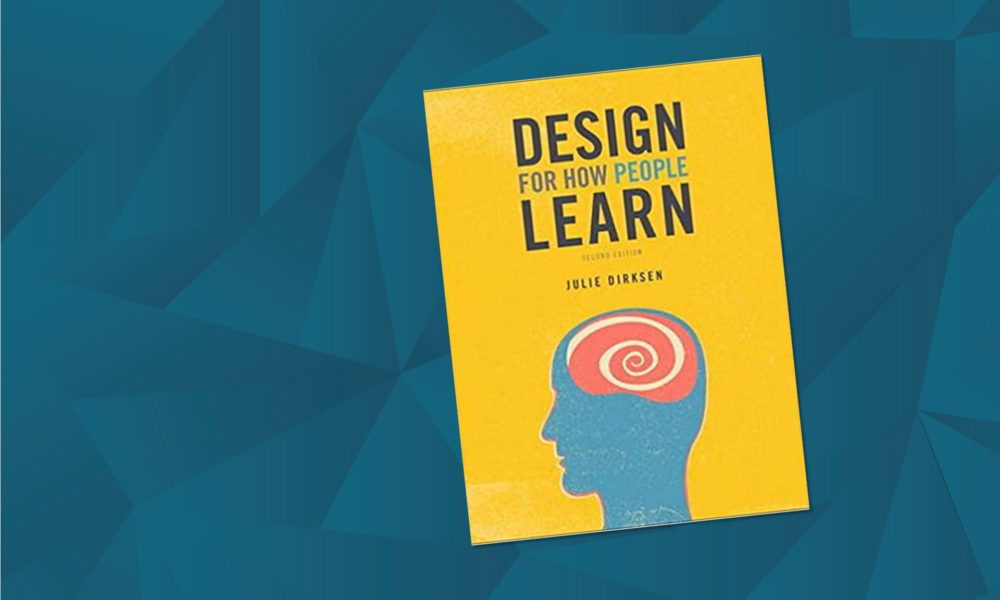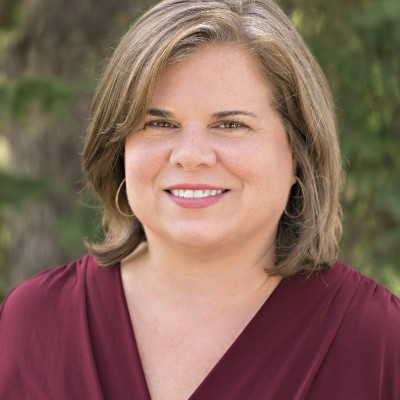Episode 123: Emily Ricco on Co-Creating Learning Design with Reps
2.6K Views | 16 Min Read
Shawnna Sumaoang: Hi, welcome to the Sales Enablement PRO podcast. I am Shawnna Sumaoang. Sales enablement is a constantly evolving space and we’re here to help professionals stay up to date on the latest trends and best practices so that they can be more effective in their jobs. Today I’m excited to have Emily Ricco from Salesforce join us. Emily, I’d love for you to introduce yourself, your role, and your organization to our audience.
Emily Ricco: Sure. Hi, glad to be here. I’m Emily Ricco and I work at Salesforce. I’ve been there since May and I work on our global enablement team. Salesforce is the leading CRM company in the world. And what I do is I help to enable our sales team and other sellers to do their job the best that they can. Prior to that, I worked in learning and development at HubSpot for seven years. And we did all of our onboarding and ongoing training for all of our employees globally.
SS: Well, Emily, I’m excited to have you. You’ve worked at some well-known brands helping them build out learning. And in fact, you and I have talked and one of the areas that you are extremely passionate about when it comes to learning design is being able to co-create content with your learners. So, I would love to hear from you, how do you go about engaging learners in the design of your curriculums?
ER: Sure. So, first I’ll talk a little bit about what we were doing at HubSpot. So, at HubSpot, we created a program that easily took people in from the business who were subject matter experts and gave them an overview of some basic instructional design principles so that they could start creating their own content. And the reason we did this is because, as the L&D team, we needed to prioritize what would impact our global organization on the broadest scale. But that doesn’t mean that there aren’t opportunities within individual teams to be trained on specifics. We wanted to make sure that the training they were creating was just as amazing as the training that we were creating on our team and help them in a way that would scale for the company. So, through that process, we were able to help them create lots of different courses on topics such as diversity and inclusion, processes that impact individual customer-facing teams and a lot of other soft skills.
At Salesforce, we use Scrum to manage our projects. One of the things that sets our team apart is that we engage learners in the design process every step of the way. So, from the beginning when we’re doing our needs analysis, we make sure to do focus groups and meet with learners and do a lot of discovery interviews. Then along the way when we have a storyboard, we want to check in and make sure that we’re using realistic examples and things that will really resonate with them. Then we have demos throughout the development process from prototype to alpha, beta, and gold with our learners so that we can make sure that navigation is clear, that things are really tuned into what they need and we’re not putting too much or not enough, and that they’re getting some helpful stuff.
SS: I love that. Now I want to click in a little bit on how to go about leveraging employee-generated content for training. I’d love to hear from you what some of the benefits are from that approach.
ER: The way that we did this at Salesforce was we launched a program that helps sales leaders nominate folks from their team that are interested in contributing to training. So, we have a kind of roster that we can reach out to get them to help us. And we make sure that we use their time as wisely as possible. We make sure to give them kudos and thank you’s at the end. A big part of Salesforce is culture to make sure that we’re thanking all the people that help us to be successful along the way. I think some of the benefits that this has had is that we have real-life examples that we can build scenarios from and we use the language that resonates and the right terminology that resonates with our learners.
Sometimes we might, as learning experience designers, have a really cool idea of how to implement something, but if it’s going to fall flat, we want to try to fail fast and get to know that directly from the end user right at the beginning. So, it really helps us to have that empathy, understand all the ways that it’s relevant or maybe not relevant to them throughout our design.
SS: I love that. And I love how it’s built into the culture over there at Salesforce. Now, I’d love to understand this last year has obviously been a change at the tides, and I think a lot of organizations, Salesforce especially, has made the choice to go into kind of a remote work environment, for obvious reasons. And so, I’d love to understand how you guys have been able to ensure that learners are engaged in the training programs, particularly with everything that’s gone virtual?
ER: Sure. So, one of the things that we think about when building virtual training is how can we create opportunities for our learners to share the stage? So, we want to make sure that the way that we design all of our sessions is that there are opportunities for them to share their own stories. We try to limit the talking from the facilitator as much as possible and make it really interactive. Another important thing that we’ve implemented is trying to have a producer present at all of our virtual sessions. So, the producer role is someone who can handle all the technical issues and also make sure that people are being engaged, whether they’re introverts, extroverts, and they can make sure that the facilitator acknowledges them and is paying attention to what’s happening in the chat. I think the producer role has really helped with taking it to the next level and making sure that people feel that we’ve created a space of belonging.
Another thing that we try to bring into our virtual sessions to make it more engaging is using technology appropriately. So, we have a variety of different tools available at our disposal. And so, we try to use the right one for the right job. I think being flexible with the tools and the environments that we can use really helps us to match them with what we’re trying to accomplish in the session.
SS: I think that’s amazing. And I love that you guys work a sense of belonging into that. Now, I want to shift a little bit because on LinkedIn you also talked about the value of learner-facing objectives. So, I’d love to hear from you, what are some of the ways that learner facing objectives have helped to improve the success of your learning programs and how do these objectives differ from those you set for yourself as a learning design team?
ER: So, learner facing objectives are definitely something that I’m still practicing. So, when I was first learning about instructional design and taking some courses, we learned the typical Bloom’s taxonomy. Here are the verbs you should know and use in your learning objectives and make sure that they’re always measurable and the learning objectives should link really clearly to the activities you choose in your design. However, at Salesforce, we talk a lot about having those learning objectives, but also creating learner facing objectives that help to market our course and increase that relevance to our learner and make them feel like this is something that’s going to be a good use of our time.
I think that one of the ways that this has helped improve the success of our programs is just by not getting too caught up in learning and development sort of jargon and trying to speak the language that our learners speak and speak the language of the business. And so, when they’re searching for what course to take next or they’ve been enrolled in something, it really is our first impression and the way that we can get them excited about what’s to come. I think that the way that these objectives differ from what we set for ourselves, we usually create both. So, we still want to make sure that our objectives are guiding our design and that we’re using measurable terminology and we’re looking for behavior change in what we set.
Then we do a second group of learner facing objectives. And those are the ones that we put into our course. Those are the ones that we usually share with stakeholders because again, our stakeholders and our subject matter experts are not folks that necessarily come from a learning background. And we don’t want to put them off with too much jargon that they’re not familiar with. We want to be speaking in a way that they understand and that they can contribute to.
SS: I think for those in our audience that are maybe a little bit less familiar on the learning side, how do you go about thinking about what behavior changes you want to see and then how do you go about measuring that?
ER: Sure. So, one of the ways that we think about how to get at what behavior change we want to see in our sales team is by having guided conversations with our stakeholders and SMEs to define those. The way that we set that up in case that’s not something that they’re too familiar with is we really try to break it down and say, “Before this training initiative goes out or this enablement program goes out, what are the current things that they know? And what are the current things that they’re doing?” Then we ask them a second follow-up question. After this, they go through this training program. What are the things that we want them to know and what are the things that we want to make sure they’re doing?
We also try to take a look at KPIs. So, are there any ways that we can indicate that success was achieved? So, whether that’s maybe trying to look for metrics in our CRM that we use, that we want to see go up or down, or if we want to decrease the time to certain, other metrics. Like, we’ll try to pick those and get a benchmark of what they look like before the training and what they look like after the training intervention to see if we’re reaching our goals.
SS: Fantastic. Now I want to pivot a little bit and talk about another of your areas of expertise which we’ve been hearing more interest arise in this area from sales enablement practitioners, and that’s really around applying best practices to project management. I think sales enablement professionals are so responsible for the orchestration of so many critical things within their organization that in order to do it all well successfully, you really need to be very good at project management. You have expertise in applying scrum to project management. You’re even Scrum certified, which is impressive. So how do you apply that knowledge to your role when you’re designing learning programs?
ER: So, at Salesforce our global enablement team has really gone all-in with Scrum. And that’s how we manage all of our projects that we do. I think that really helps us to provide, alignment across our different projects we’re working on. It allows us to make sure that we’re keeping our stakeholders in the loop of any risks or impediments that we’re facing. And it also allows us to move quickly so we can make iterations, have changes come up and not be completely thrown off on our deadlines and just move very quickly as a team.
So, the way that I apply my own Scrum knowledge when designing programs is, I try to break things into different pieces or user stories. And that allows me to structure my own time to achieve things, make enough time for different layers of feedback to come in and alter my path and also just think a few steps ahead, but also be flexible. That is how it’s helped me.
SS: That’s fantastic. Now, you’ve mentioned a few of the ways in which it’s important to have project management skills, just generally speaking, for sales enablement, but I’d love to hear from your perspective, why it’s important to have really strong project management skills as a learning designer?
ER: Sure. So as a learning designer, we’re asked to be a lot of different things and one of them is a project manager, and it’s really important to be transparent about what you need from other people to get your design done. And when they can expect things from you and have that solid relationship with all the different people that you need to work with, whether that’s your stakeholders, your subject matter experts, your production team if you have one, and finally like your LMS team or your marketing, like if you have learning marketing team, everyone.
So, having project management skills just makes you a better communicator and a better teammate. I think also a lot of the learning design process can be pretty fluid and you learn different things every day that might change your path. And so, having that autonomy over how you manage your time and how you can move things around to reach your goal is really important as well.
SS: Absolutely. I couldn’t agree more. Well to close out on this particular topic, I’d love to hear from you a little bit more broadly beyond just even behavior change. How do you go about measuring the success of your learning programs?
ER: Sure. So, we generally try to abide by Kirkpatrick. The first level of measurement is reaction. So, we do have surveys in which we ask our learners, “How relevant was this for you? Have you built confidence in these topics after going through this program?” We also collect like completion information as well, but where we’re trying to get to be level two and three, which is really about has that behavior change happened. So, looking for those metrics that might indicate that working with their managers or peer coaches and doing before and after comparisons using rubrics to determine what good looks like what, great looks like and what okay looks like. And then also just looking at our CRM and seeing what data points we can pull to show the business change that we’re making.
SS: I love that. Well, Emily, thank you so much for joining us today. I enjoyed learning from you on all of these learning topics.
ER: Yeah, thanks so much for having me. to our audience.
SS: To our audience, Thanks for listening for more insights, tips, and expertise from sales enablement leaders, visit salesenablement.pro. If there’s something you’d like to share or a topic you’d like to learn more about, please let us know. We’d love to hear from you.













